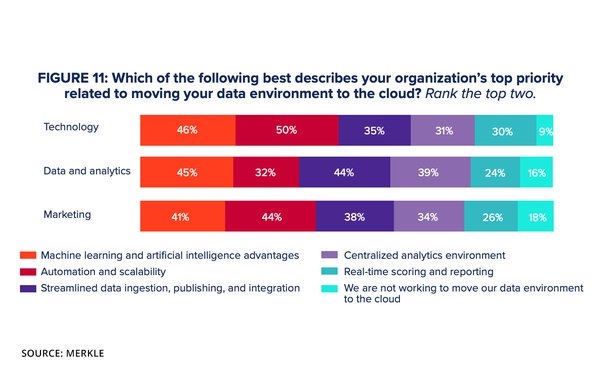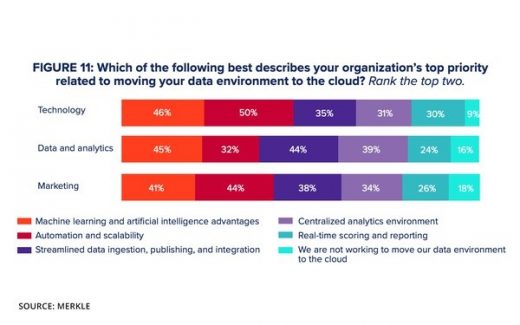CDP Strategy To Drive Revenue, Study Shows Ups And Downs
CDP Strategy To Drive Revenue, Study Shows Ups And Downs

Marketers face mounting pressure as they scramble to comply with privacy practices and ensure a safe way to collect first-party data, identify customers, and use that data to power experiences.
Merkle has released its fall 2021 Customer Engagement Report (CER), which explores the future of marketing through data-driven conversations around how marketers are pivoting strategies to address changes in customer expectations, privacy and compliance practices.
The team surveyed 600 marketing, analytics, and technology executives at brands that generate $100 million or more in annual revenue from the U.S. and the U.K.
The central question addressed and explored in the report is how their companies deal with today’s issues and what opportunities they are pursuing.
Some 94% of respondents said they have implemented and integrated real-time capabilities to support a rapid shift to online customer contacts instead of in-person. About 79% said they are looking for identity to inform customer preferences and to serve relevant content and experiences to drive conversations.
Organizations must understand how they will use, identify and collect data, and then operationalize it. Cloud-based databases may be helpful for this, as they organize the collection and unification of customer data being gathered across all channels, structuring data into individual customer profiles, according to Merkle. CBDs also offer marketers the ability to access the data in real-time.
The study asked marketers about their approaches to capture customer data and whether or not they have increased their ability in the past 12 months, and found:
- 85% increased the use of mobile apps
- 82% increased the use of websites and ecommerce
- 66% used direct consumer relationships
- 61% increased the use of gated content
- 48% tapped loyalty and subscription programs.
- 50% slightly increased their ability to capture data
- 37% significantly increased their ability
- 6% said it was unchanged
- 6% slightly decreased
- 1% significantly decreased
Marketers need to care about identity resolution, because consumers want them to understand who they are, especially when they are dedicated and loyal to the brand. Some 82% of respondents said resolving personal-level identity in real-time is fairly or very important for them.
About 96% of survey participants indicated they can resolve person-level identity in real-time, but being able to resolve identity is just the first step. Marketers also need a strategy and must transform insights into action.
Broad data collection is not helpful. The consumer products supply chain learned this when it adopted radio-frequency identification technology to track products from manufacturing facilities to store shelves. The semiconductor chips picked up many types of data and muffled the important metrics.
Merkle suggests that companies much have an efficient system for compliant-customer lookup and erasure. It is not only risky, but annoying when customers are getting bombarded by requests for excessive amounts of data that will never be used. For example, if a coffee shop chain asks for your birthday, but doesn’t send a gift or discount on your birthday, what is the point?
While the platforms are still in the early stages, organizations are beginning to consider them as a next step, or they have already implemented a CDP. Thirty-six percent have been actively utilizing a CDP for over a year, and 53% are currently in the market for a CDP.
- 62% of marketers are looking for a CDP
- 30% of marketers have used a CDP for more than one year
- 7% of marketers have used a CDP for less than one year
- 1% of marketers are not in the market for a CDP
The primary value of a CDP varies, but some of the common expected values include technology consolidation, improved customer experience, and increased revenue, according to the data.
What are the values?
- 28% – technology consolidation
- 28% – improved customer experience
- 23% – increased revenue
- 13% – process efficiencies
- 8% – cost savings
Some 56% of respondents said they use a CDP to adopt new customer strategies, and because they provide organizations with flexibility and scalability way to react to new market shifts.
(28)


